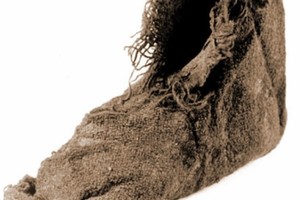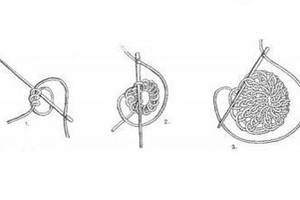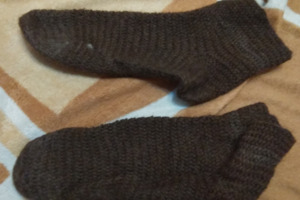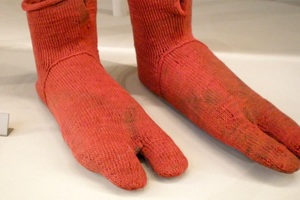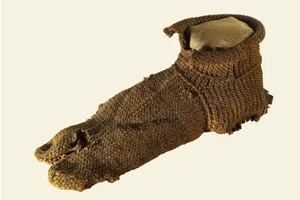Socks
Socks, although not often mentioned, were an important element of clothing in antiquity. They served a protective function, shielding the feet from cold, blisters, and injuries, especially when worn with footwear. Ancient socks not only provided comfort but also had an aesthetic role, often being decorated with various patterns and dyed in bright colors.
The closest Latin term that has come down to us is impilia, which refers to felted stockings or soft shoes. However, there is a theory that the modern English word "socks" comes from the Latin word soccus, which described a type of heel-less footwear worn by actors. In turn, this Latin term originates from the Greek sykchos.
The earliest known socks discovered by archaeologists were found in Egypt and date back to the 5th-3rd centuries BC. These socks were made of wool and were used in combination with sandals, as evidenced by finds from places like Vindolanda in Britain. In some sandals unearthed during excavations, wool remnants were found, indicating the use of socks with open-toed footwear.
Socks in antiquity were made using different methods. One such method was knitting, which involved using needles to create a dense and durable fabric. This craft was developed in Egypt, where socks were knitted for everyday use. In other regions, such as Rome and Greece, socks could be made of felt or fabric sewn into the desired shape.
There were two main types of socks: those with a separate compartment for the big toe and seamless socks similar to modern ones. Socks with a divided toe were especially convenient for wearing with sandals, as they allowed the sandal straps to fit comfortably between the toes. Seamless socks, on the other hand, were primarily used with closed footwear.
The materials used to make socks varied depending on the region and available resources. Wool was the most common material due to its insulating properties and relative ease of processing. In some cases, linen or cotton was used, which also provided comfort in warmer weather.
Reconstruction
In historical reconstructions, woolen knitted socks are appropriate for almost any depiction of the ancient period. Below is one possible knitting pattern.
Related topics
Legionnaire, Auxiliaries, Calcei, Caligae

 Gallery
Gallery






